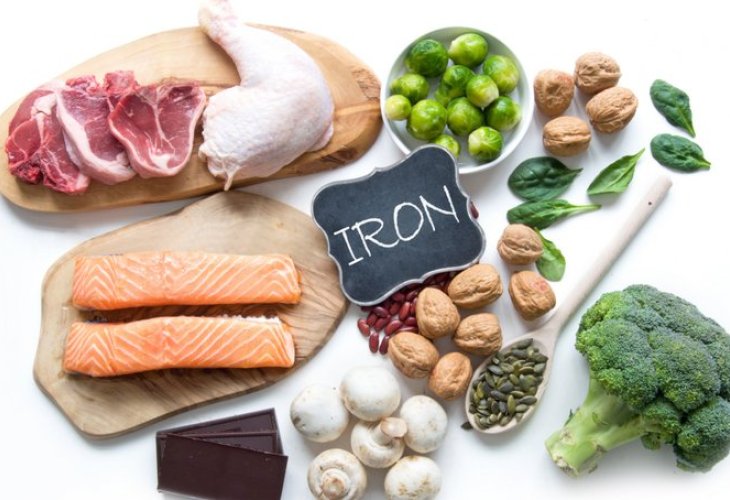Suffering from Low Iron? You Won't Believe What's 'Stealing' It from Your Body (and How to Steal It Back)
When discussing iron deficiency in the body, it's important to know that it's not enough to recognize foods rich in iron. We must also be aware of those we should limit, as they hinder iron absorption when consumed regularly. Here are essential tips to know.
 (Photo: Shutterstock)
(Photo: Shutterstock)When discussing iron deficiency in the body, it's important to know that it's not enough to recognize foods rich in iron. We must also be aware of those we should limit, as they hinder iron absorption when consumed regularly.
Foods rich in animal-based iron include: beef, chicken, organ meats such as spleen, gizzards, chicken liver, turkey pastrami, and fish (tilapia and salmon as well as mackerel, sardines, and anchovies). Animal-based foods are preferable over other sources since this type of iron is absorbed directly into the bloodstream compared to plant-based iron, for example.
Plant-based foods rich in iron are: vegetables and fruits high in vitamin C such as tomatoes, peppers, parsley, kohlrabi, green cabbage, cooked lentils/other legumes, flaxseeds.
Other products rich in iron include: whole wheat bread, natural health snacks fortified with iron, nuts, tofu, eggs.
Take Note: The following sections will help you understand why certain foods should not be consumed despite their iron content, and how to consume them properly nonetheless:
1. Whole Grains and Baked Goods
Whole wheat bread and whole grain cereals are rich in iron, but the phytic acid they contain interferes with iron absorption, so it's better to avoid them.
2. Beef, Fish and Chicken
Chicken and fish are considered the least preferable sources of iron among these three, though still preferable to other sources, as this type of iron is best absorbed by the body. Despite being rich in iron, organ meats also contain high levels of saturated fat and bad cholesterol, so they should be consumed in the right amount after consulting a doctor or dietitian.
3. Eggs
Though they contain iron, the iron from eggs is difficult for the body to absorb, so it is better to reduce their consumption.
4. Problematic Calcium in Dairy
Milk is indeed a rich source of iron, but its significant drawback is the high calcium content that interferes with proper iron absorption. Therefore, consult a doctor or dietitian on how, how much, and what to consume in terms of dairy products.
5. Legumes
The most recommended legumes are tofu, soybeans, white and red beans, lentils, chickpeas, and green peas. Even though they are excellent as a source of iron, they should always be paired with vegetables or fruits rich in vitamin C, as these help the iron in legumes to be absorbed more effectively.
6. Vegetables
Vegetables like tomatoes, peppers, parsley, kohlrabi, and green cabbage are preferred for those suffering from iron deficiency. While other leafy vegetables are also excellent sources of iron, the oxalic acid they contain interferes with good iron absorption in the body, so their consumption should be reduced when eating iron-rich foods.
What's stealing our iron? You won't believe it, but caffeine is the culprit: black coffee, instant coffee, regular tea, green tea, and cola are all to blame, and they should be consumed about two and a half hours after eating an iron-rich meal.

